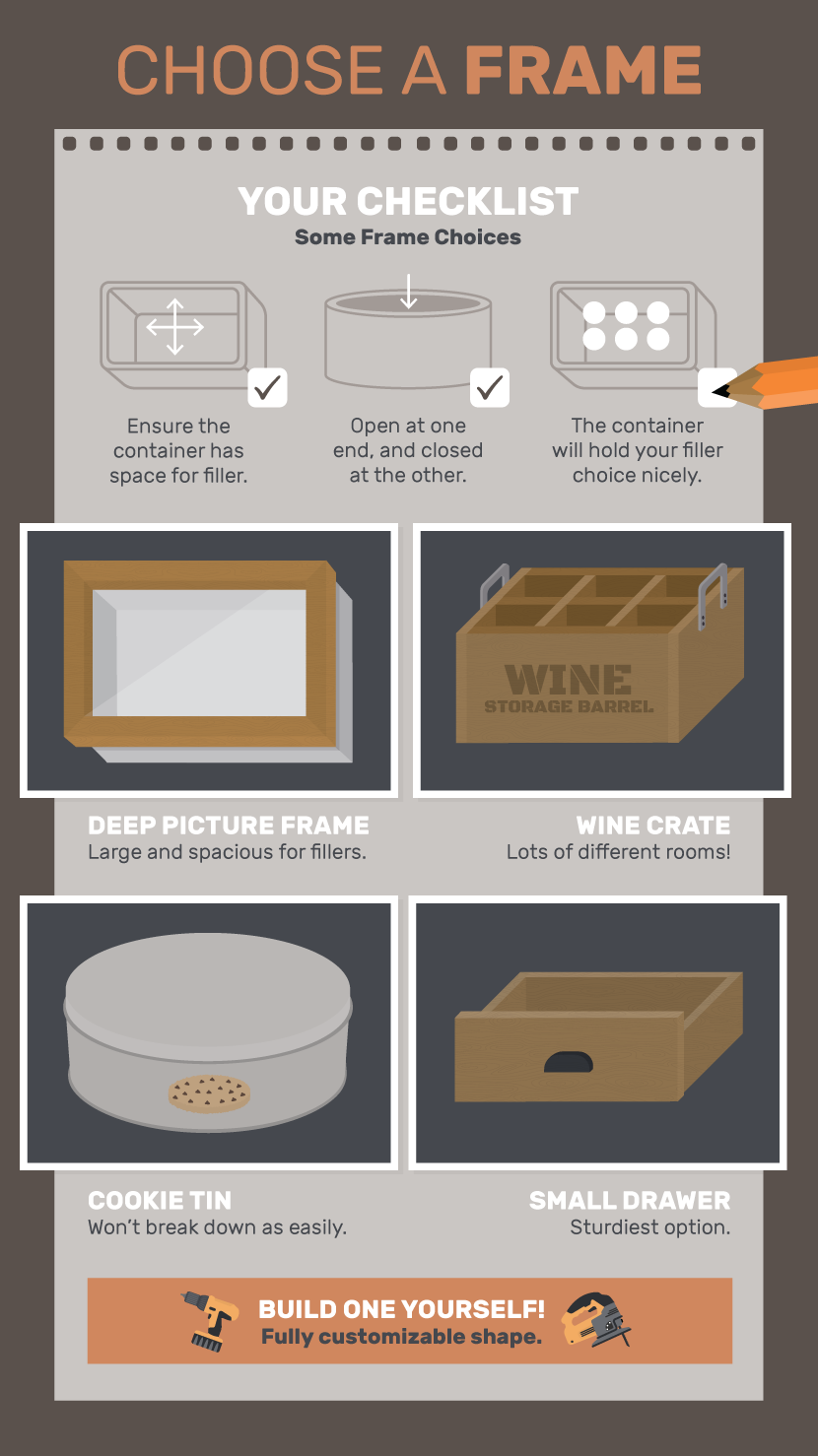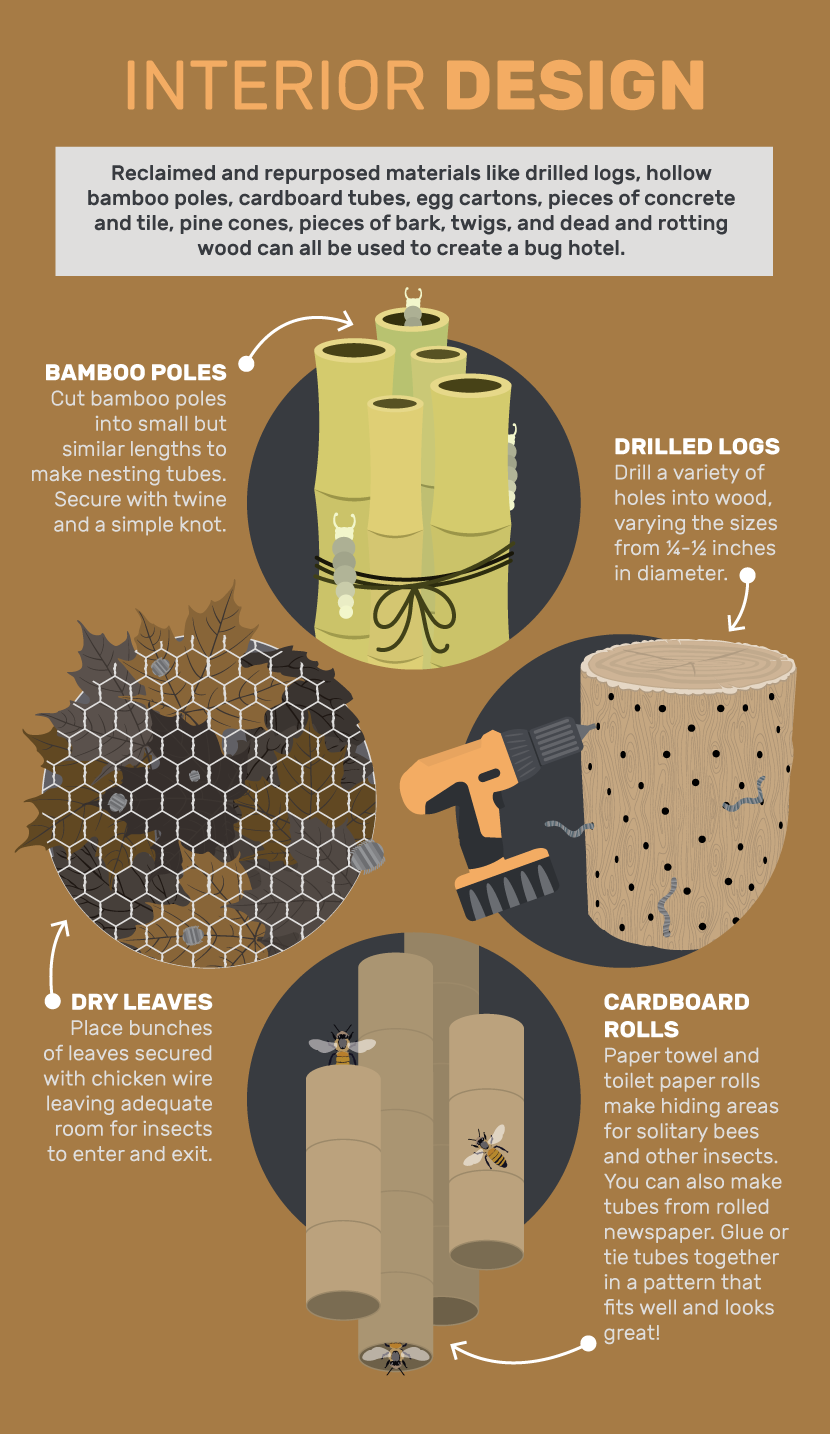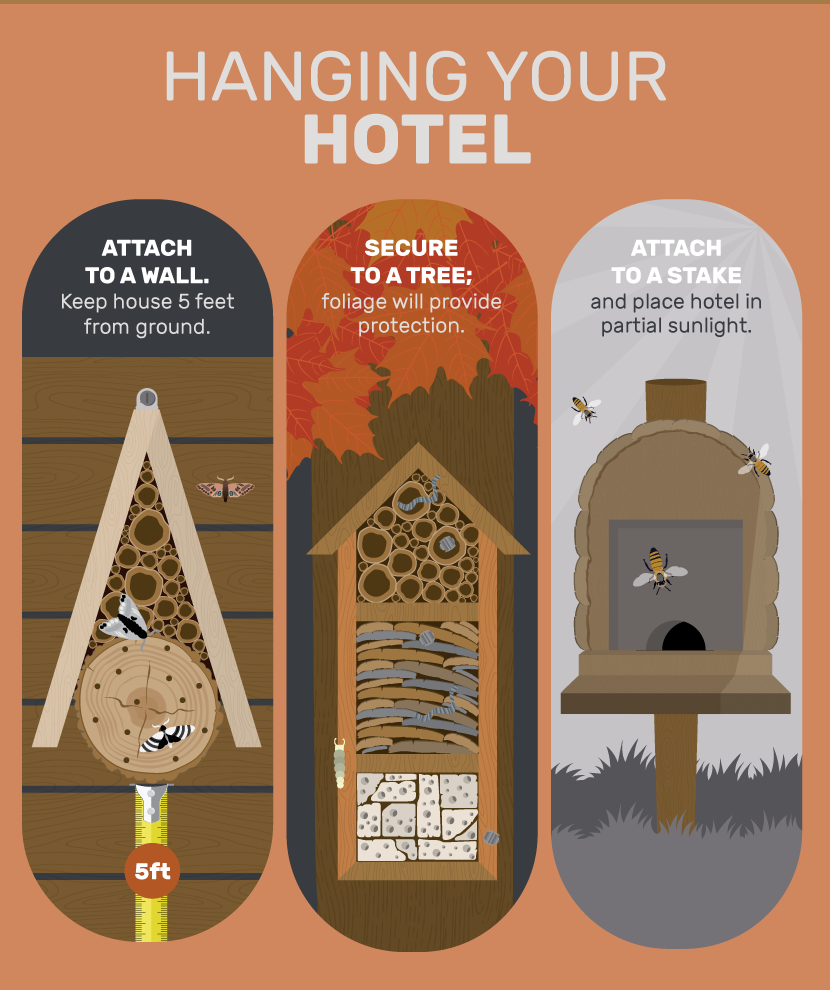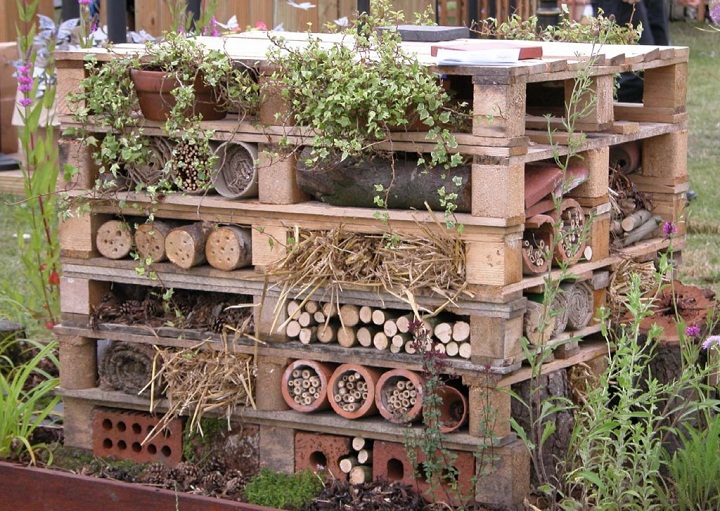How To Become More Self-Sufficient Without Starting a Full-Blown Farm…
Want to start preserving your harvest, making your own soap, or building a backyard root cellar — but not sure where to begin? “Homesteading Advice” gives you instant lifetime access to 35+ practical homesteading books on food preservation, veggie gardening, DIY natural cleaning products (save over $250 per year with this skill alone), brewing, off-grid energy, and a whole lot more…
Click Here To Check It Out Now!
At any given time, your garden might contain over 2,000 species of insects. Some of these are pests, the kind you don’t want in your garden because they destroy your flowers and vegetables. But many others are beneficial insects, the kind you want to attract because they work with you to control pests and pollinate flowers.
Insect Hotels Attract Beneficial Insects…
Beneficial insects support biodiversity, the foundation for the world’s ecological balance. An insect hotel in your garden will attract these beneficial insects, offering them a space where they can propagate and hunker down for the winter. Encouraging biodiversity in the garden helps to increase ecosystem productivity.
Placing an insect hotel in the garden increases the chances that beneficial insects will naturally visit your garden. Also known as bug hotels, bug boxes, and bug houses, these human-made structures offer several benefits. In addition to their decorative qualities, they help supplement the increasing loss of natural habitats…

Although altered and heavily landscaped gardens can be beautiful, they often lack enough of the natural habitats needed to attract beneficial insects and encourage biodiversity. Placing insect hotels in your garden offers optimal bug real estate – the right kinds of habitats to attract these beneficial insects, increase their numbers, and reduce the need for pesticides, since these bugs offer biological pest control. A balanced ecosystem provides numerous benefits not just for the individual garden, but for the environment as a whole.
Benefits of Insect Hotels
- Supplement the increasing loss of natural habitats
- Encourage beneficial insects to help control pests
- Stimulate biodiversity and ecological balance in the garden
- Offer an opportunity for educating children about how balanced ecosystems work
Natural Pest Control…
Welcoming beneficial insects and pollinators into your garden reduces or eliminates the need for pesticides. Poison kills weeds and pesky insects, but poison is not selective: it kills beneficial insects as well.
According to the USDA’s Natural Resources Conservation Service, three-quarters of the world’s flowering plants and roughly 35 percent of the world’s food crops depend on animal pollinators to reproduce, with more than 3,500 species of native bees helping to increase crop yields. By some estimates, one out of every three bites of food we consume depends on animal pollinators like bees, butterflies and moths, birds, bats, beetles, and other insects…

The Beneficial Insect Community…
Albert Einstein once said, “Mankind will not survive the honeybees’ disappearance for more than five years.”
Bees
Once again, Einstein was right. About a third of our food supply depends on pollination. Bees are essential for the production of fruits and vegetables, and their loss is negatively impacting our food chain. In addition to pesticides, the harsh winters and droughts from climate change have also played a role in the declining bee colony population. Gardeners need to remedy this situation by doing whatever is possible to attract bees and help maintain their health and safety.
Honeybee Colony Collapse Disorder (CCD) refers to the rapidly declining bee population, which poses a significant risk not just to the survival of the bees, but to our survival as well. The Natural Resources Defense Council (NRDC) attributes the decline in large part to the increased use of pesticides, such as neonicotinoids, or neonics, manufactured and promoted by multinational chemical giants.
According to the NRDC, 42 percent of U.S. bee colonies collapsed in 2015, a number well above the average 31 percent that have been dying each winter for the past decade. The USDA, however, describes Colony Collapse as a “mystery problem” and contends that there is as yet no proven scientific cause for CCD. Many may disagree about its causes, but all can agree with Einstein that preserving the bee population is essential.
Talking About The Birds & The Bees…
Although bees are well known for their role as pollinators, they are not the only pollinators that can be attracted to an insect hotel. Other beneficial insects include beetles, butterflies, green lacewings, leaf miners, white flies, mole crickets, cabbage worms, hummingbirds, and bats.
Beetles
Some say that more than one hundred million years ago, beetles were the very first pollinators. Beetles pollinate 88 percent of all flowering plants — that’s more than any other animal.
Hummingbirds
Here’s an interesting factoid about these little birds: hummingbirds pollinate almost exclusively on flowers that hang upside down. By using artificial flowers to feed the birds and then recording them with high-speed footage, researchers discovered that hummingbirds expended 10 percent more energy drinking from upside-down flowers than from right-side-up flowers. They postulated that right-side-up flowers are more exposed to rain, which might dilute their sweet nectar and therefore make them less desirable for hummingbirds.
Butterflies
Although not as efficient pollinators as bees, butterflies are still important for pollinating gardens. Unlike bees, butterflies can see the color red, which directs them toward the brightly hued blooms. To attract the opposite sex, butterflies emit pheromones, which are very similar to the scents of certain flowers to which other butterflies are attracted.
Green Lacewings
Green lacewings larvae feast on the eggs and immature stages of numerous soft-bodied insect pests, including many species of spider mites, aphids, thrips, whiteflies, and leafhoppers, as well as the eggs and caterpillars of pest moths and mealybugs.
Bats
In addition to insect hotels, consider placing a bat house in your garden. Some bats are pollinators, while others are “insectivores” that eat insects. In one night out, a single insect-eating bat can consume 60 medium-sized moths or over 1,000 mosquito-sized insects.
Bats arrive after sunset to assist in pest control by consuming garden pests, while others continue the work of pollination when the bees, butterflies, and other insects have left for the day.
Two species of these nocturnal animals are nectar-feeding, the lesser long-nosed bat and the Mexican long-tongued bat. Bats are very important pollinators in tropical and desert climates. Most flower-visiting bats are found in Africa, Southeast Asia, and the Pacific Islands.
The flowers typically of interest to bats are large ones that open at night, are white or pale colors, and emit a musty or rotten scent.
Bats are important pollinators of desert plants such as cacti and agave — from which we get tequila — but they also pollinate much of the vegetation in the rain forest. Over 500 species of fruits and vegetables rely on bats to pollinate their flowers. Avocados, bananas, carob, cashews, cloves, dates, durian, figs, guavas, mangoes, and peaches owe much of their existence to the pollination they have received from these pollinators of the night...

Insect Hotels: Purchase Or DIY?
Different insects require different accommodations in which to thrive. Do a little research about the climate in your area before you decide what kind of insect hotel to buy or make. Each bug habitat performs a different function depending on the location’s climate. In cold climates, they offer a refuge for hibernation, while in warmer climates they function as dry nesting places during the wet season.
While there are many varieties of insect hotels available for purchase, building your own can be a relatively simple, fun, and educational DIY project you can do with children. Using a variety of found natural materials, you can build a bug or bee condo perfect for each type of insect you hope to attract.
Solitary bees and wasps seek places to lay their eggs, so they will be attracted to various-sized holes in wood. They also like to hide out in the open spaces in bamboo poles, which you can cut into small pieces. If drilling holes into wood, vary the sizes from 0.2-0.4 inches in diameter so other species will also fill those spaces. Not-so-nice wood works too: wood-boring beetles love rotting logs.
Reclaimed and repurposed materials such as old pallets, drilled logs, hollow bamboo poles, cardboard tubes, egg cartons, small stones, pieces of concrete and tile, pine cones, pieces of bark, found twigs, dead and rotting wood, hay, plant stems, and discarded planters are some of the kinds of materials that are perfect for constructing a habitat for your garden’s pollination and pest control workforce.
Where To Place The Bug Hotel…
A bee hotel needs to be a high-rise to keep away ants, which love dining on bee larvae. Other bug boxes require sheltered but sunny spots surrounded by a variety of flowering and insectary plants (plants that attract and harbor beneficial insects).
Designers from all over the world have created insect hotels that double as works of art. Who knows, maybe you’ll be inspired to build a better insect house – and if all else fails, there’s always ready-made housing you can gift to your bug friends (Via: Fix).
If you’re not interested in building your own insect hotel, you can pick up ready made ones on Amazon. If you like this idea, be sure to share it with your friends and inspire someone you know. Anything becomes possible with just a little inspiration…

